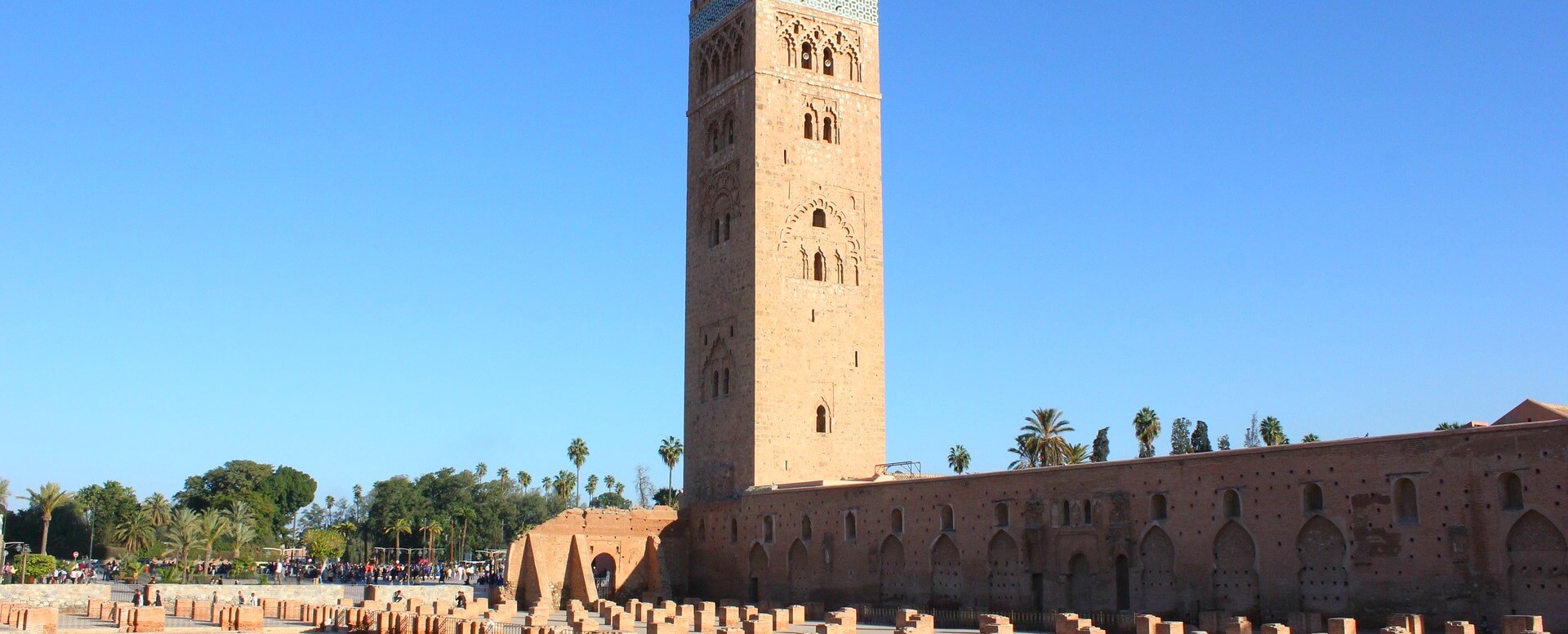Marrakech, known as the ‘red city’, has had a very rocky road on its journey through time and the history of this magnificent city has most definitely created the Marrakech we love today.
Founded by the Almoravids around the year of 1062, Marrakech is one of Morocco’s imperial cities alongside Fes, Rabat and Méknes. Sultan Youssef ben Tachfine takes credit for constructing the defensive walls that line the edge of the city. It became the capital city of the Almoravid Empire and developed into an Islamic city of vast wealth and commercial power.
Marrakech was then captured in 1147 by the Almohads and all religious buildings were destroyed. These people then began to remodel the city and created a kasbah, stunning gardens, a massive gate known as Bab Agnaou, and rebuilt the mosques. However, their reign didn’t last long and the Merenids soon took over in the mid-1200s and led the city into a decline where lots of income was lost and Marrakech became neglected.
In the year of 1522 the Saadians arrived and took over Morocco, declaring Marrakech the capital in 1551. Mohammed Al Mahdi ensured that Marrakech would return to its former glory and began to restore the red city. During this time beautiful structures were built including the Al Bedi Palace which continues to show the life of Sultan inside. By the early 1600s Marrakech had regained its former wealth and status and soon became the most influential city in the whole of Morocco. However, this power didn’t last long as the city was captured by the Alaouites in 1669 and Marrakech slipped back into decline and disrepair once again, making Fez the new capital.
Around a century passed before Mohammed III started to restore most of the city of Marrakech back to its former state, although nothing much was changed until 1911 when the French invaded Morocco. The country was then held as a protectorate by France through the Treaty of Fez and the Pasha El Glaoua governed it. During this time the Pasha quickly became one of the most influential and richest men in the whole of Morocco. The country made significant economic improvement because of the infrastructure developed by the French and the Medina of Marrakech was completed.
In the year of 1956 Morocco finally gained independence from France and Mohammed V, the new king, took over the throne stripping the power and wealth from the Glaoua family. The new monarchy then decided to make Rabat the capital city of Morocco. Marrakech is still very much a cultural hub today and its rocky past has defined the city that we see today which attracts visitors from all around the world.
